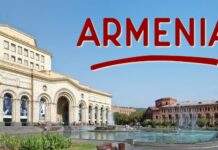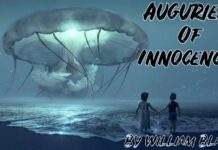“A Tale Of Two Cities”As A Historical Fiction. The word history always plays an important role in‘ forming the background of Dickens’ literary works. As far as the novel “A Tale of Two Cities” is concerned which can be termed as an historical novel because it has always been important in literary figures. For it always provides a background to their literary compositions. So, it can also be said that history and Dickens always go side by side. French Revolution which had played a very key and vital role in the lives of Europeans who were absolutely affected by its horrible and dreadful results. Their lives took a new great turn after this revolution.
This Revolution not only affected every European’s life but also the lives of all the writers. Dickens was not exempted from it. He was having a very sensitive soul and was deeply affected by the results of French Revolution, he therefore wrote this novel in the perspective of French Revolution.
We observe in this novel that every character is directly or indirectly influenced by this revolution. Sometimes, it seems that Dickens is against the Revolution because it caused a lot of bloodshed, killings, executions, murders, hangings, etc. It seems to be annihilating the whole generation but sometimes, it feels that Dickens favors it; as it helped the poor and crushed people to compensate for the wrong doings and exploitation of the rich and aristocratic sections against them. It also became a medium of raising a voice of protest against the privileged and aristocratic families of the society.
Carlyle’s French Revolution had great effects on Dickens’ imagination and he described the principal historical scenes and events. Yet, there are many limitations in this novel from a historical point of view because other English and French issues of the society are not discussed. Dickens gives us no progress and culmination of French Revolution though he tells us the only hatred of the public towards the privileged classes. He only gives the sketches and scenes of excesses, killings, executions, hangings and barbarities which were committed by the revolutionaries during that revolution. He even does not talk about the systematic analysis of the causes of the French Revolution.
Neither does he take notice of the leading historical figures of the French Revolution such as Napoleon and Mirabeau who did great in making this Revolution a success. On the contrary, Dickens only shows a great injustice of the rich towards the poor which leads to violence, and violence then to inhuman cruelty. To some extent, here Dickens becomes paradoxical. Firstly he supports the crushed and down-trodden sections of the society but in the end he terms them as villains. How a pathetic scene it is when the French Revolution gets its climax when Madame Defarge cuts off the head of the Governor of the Bastille. Apart from these acts of violence, there are also further excesses which show the anarchy of the Revolutionaries.
There is no doubt in saying the fact that Dickens, having a very soft and tender heart, feels a great pathos at such excesses. The Chateau of the Evremondes is set on fire and the old Foulon and his son-in-law are hanged. It is the ending part of the novel in which we see that the brutalities of the French Revolutionaries reach at their peak. The scenes in which weapons are sharpened on the grindstones for the next killing or bloodshed, are really heart-itching and nerve splitting.
The working on La Guillotine which is the National Razor and which shaved close, is really awful to watch. The revolutionary tribunals in which the arrested culprits are trailed to death sentence, also resulted in killing of many harmless people for nothing. In fact, these are such episodes and scenes in which Dickens shows us the atrocities of French Revolution and also clarifies the historical references about this revolution.
Apart from giving the graphic picture of the French Revolution, Dickens is not ignorant of the vital roles which were played by a group of private characters with its events. These particular individuals are the major characters of this novel who are as Dr. Menette, Luice Manette, Darnay and Sydney Carton. These such characters were forcefully drawn into the horrible revolutionary events as innocent victims who did not at least deserve the sufferings and distresses which were caused to them by the dreadful and torturous events of the French Revolution.
Darnay who loves the poor and common section of people who were being exploited by the rich people. He renounces the properties of his forefathers and bid farewell to the luxurious estate of his family in Paris but even then he is sentenced to death very unjustly and lawlessly. Sydney Carton’s sacrificial execution is an act of supreme sacrifice. It is his noble death which demonstrates the possibility of rebirth through love and expiation.
This novel is different from Dickens’ other novels in its presentation. Dickens presents everything through the symbolism. Being a fine piece of fiction in which Dickens converts a domestic life of a few simple private people with the terrible public event so masterly that the one seems to be the part of the other. As Dickens himself is not a man of revolutionary acts, he makes it clear that it is the upper strata or high gentry of French society which causes the outbreak of out breaking this bloody French Revolution. It was the result of a natural process which resulted in the consequences of the social oppression which had been continuing in France for many centuries.
Note being a true Marxist yet revolutionaries and radicals have been Dickens’ favourite topics, Both Marx and Engels always praised his novels and regarded him as a fellow fighter in the war against social injustices, social inequalities, social exploitation of Victorian England. As a matter of fact is concerned, they are not right in their views because Dickens does not favour or approve the violence, executions, murders, killings, hangings etc. of the revolutions. Dickens had always condemned these acts of bloodshed and he thought always that these are as negative as the oppression of a rigid capitalist social order and all these acts of violence were equally destructive.
Dickens had openly clarified that he always considered revolution as a monster violence which always led to another violence and it was a such kind of process in which the oppressed got oppressive whenever they had an opportunity to dominate. There is an evident example in this regard in this novel “A Tale of Two cities” when Madame Defarge gets oppressive, she gets aggressive and her limitless desire for revenge changes her into the same evil against which she began to struggle. Her hatred is the reward of hatred.
To sum up this above mentioned analysis; we can say in the concluding remarks forcefully and vehemently that Dickens wants to make it clear that aristocratic and high gentry people of any society should not behave exploitedly with the common and poor people of the society that they become so frustrated and angry that they are compelled to revolt and become ruthlessly violent. This bloody French Revolution could be averted if the Frenchmen had behaved like Dr. Manette and Darnay then would not have erupted or started any kind of revolution Dickens always favoured and agreed to the view that every revolution is the product of social injustice, inequality and lawlessness. It is the law of nature that whenever and wherever the subjects will be crushed down by suppression, the oppressors would react in bloody revolution.
























